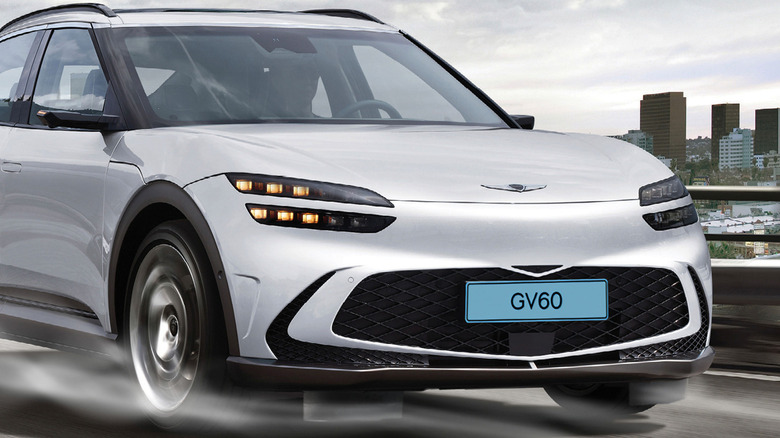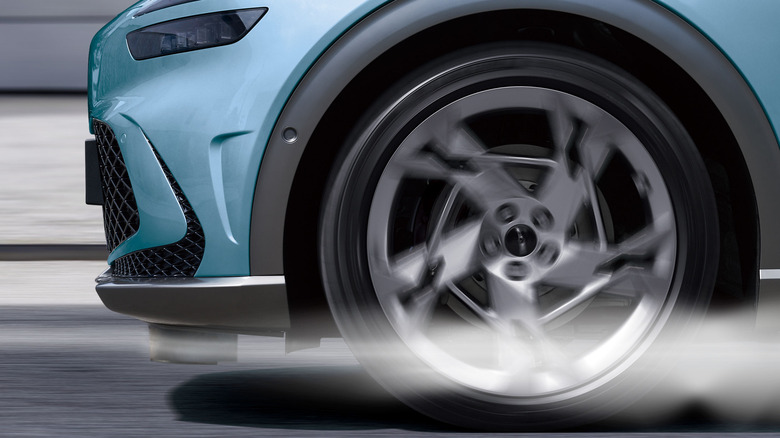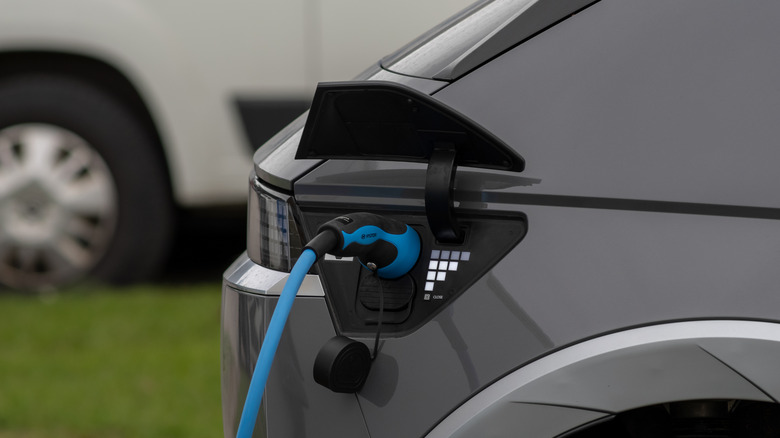Here's How Hyundai's 'Active Air Skirt' Could Help You Get More Out Of Your EV
Because electric vehicles are still relatively new technology, there are still a lot of problems that manufacturers are trying to overcome, especially when it comes to range and durability. Despite the various improvements in EV technology made throughout the years, range anxiety remains a key pain point for existing and prospective EV owners. In fact, it's a key reason why many people are opting for hybrids instead of full EVs.
Additionally, many EV owners are concerned with how many years they'll actually have with their car, which can dictate its overall environmental impact. Despite being marketed as an alternative for the environmentally-conscious, the reality is that electric vehicles also have hidden carbon footprints. It's no wonder that many EV manufacturers are racing to find the best solutions to make it more feasible for the average driver.
In January 2024, Hyundai announced its attempt to help improve both durability and range for electric vehicles: the Active Air Skirt (AAS) tech. Using technology that controls the flow of air entering through the lower part of its bumper, AAS is designed to help control the turbulence generated around the vehicle.
While it's not completely pioneering technology, AAS works actively to enhance the aerodynamic performance of their existing E-GMP platform, such as the design choice to cover the front part of the tires due to its flat platform floor. Here's why it matters.
How the AAS will make a difference
Hyundai claims that tests with the AAS on the GV60 revealed that the technology is expected to reduce the drag coefficient (cD) by 2.8%, and improve the overall driving range of EVs. The drag coefficient is the quantified resistance of the air, which is acting opposite the direction of a moving vehicle.
In its announcement, Hyundai also shared that AAS can operate at speeds over 200 kph. Because of rubber material application in the lower portion, Hyundai states that it can reduce the risk of external objects splashing and damaging the car while driving at high speeds. "This technology is expected to have a greater effect on models such as SUVs where it is difficult to improve aerodynamic performance," said Sun Hyung Cho, Vice President and Head of the Mobility Body Development Group at Hyundai Motor Group.
While still under development, Hyundai Motor and Kia have already applied for related patent applications in South Korea and the United States. However, Hyundai also mentions that the technology still needs to undergo durability and performance tests before it can be sent to mass production.
Getting the most out of your EV currently
Unfortunately, the Active Air Skirt feature still isn't available, so only time will tell how significant it can be for your EV driving experience. Thankfully, while we're waiting, there are plenty of things you can still do to get more out of your electric car today. According to Statista, batteries make up 28% of the cost of an electric vehicle. Although the study also shares this number is projected to go down to 19% by 2030, there's definitely an incentive to follow a few rules to make sure your EV lasts longer.
For many new EV owners, making the transition from traditional vehicles to ones made of emerging technology is often marred with common mistakes. When it comes to taking care of your electric car, there are a couple of additional things you need to be mindful of, like using the wrong battery regeneration method, incorrectly measuring charging needs, or not realizing the impact of temperature on the vehicle's longevity.
Aside from staying updated on your maintenance, you can also learn how to drive your car more effectively, be more mindful about storage and its effects on your battery, and read about specific care instructions from your EV manufacturer.


